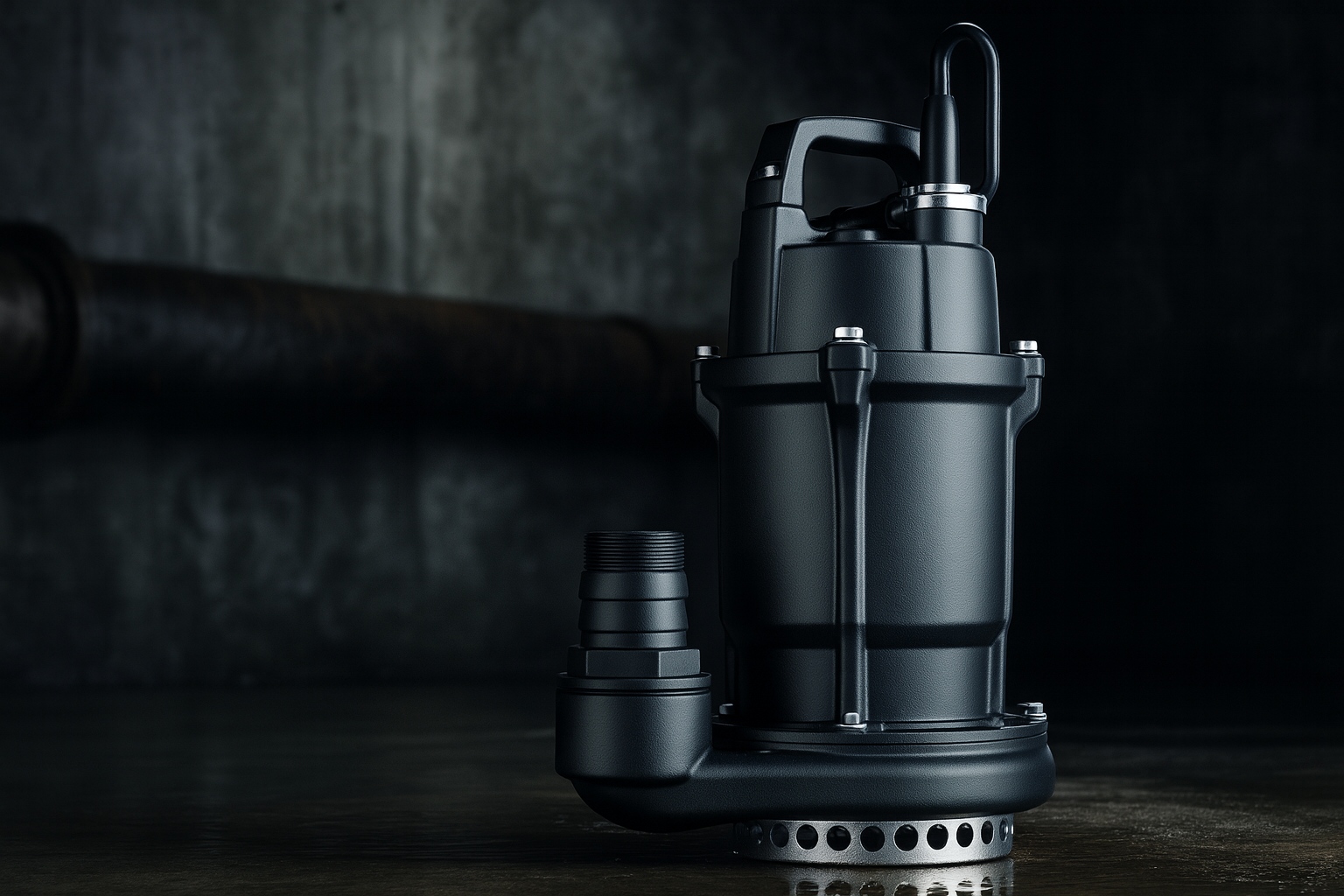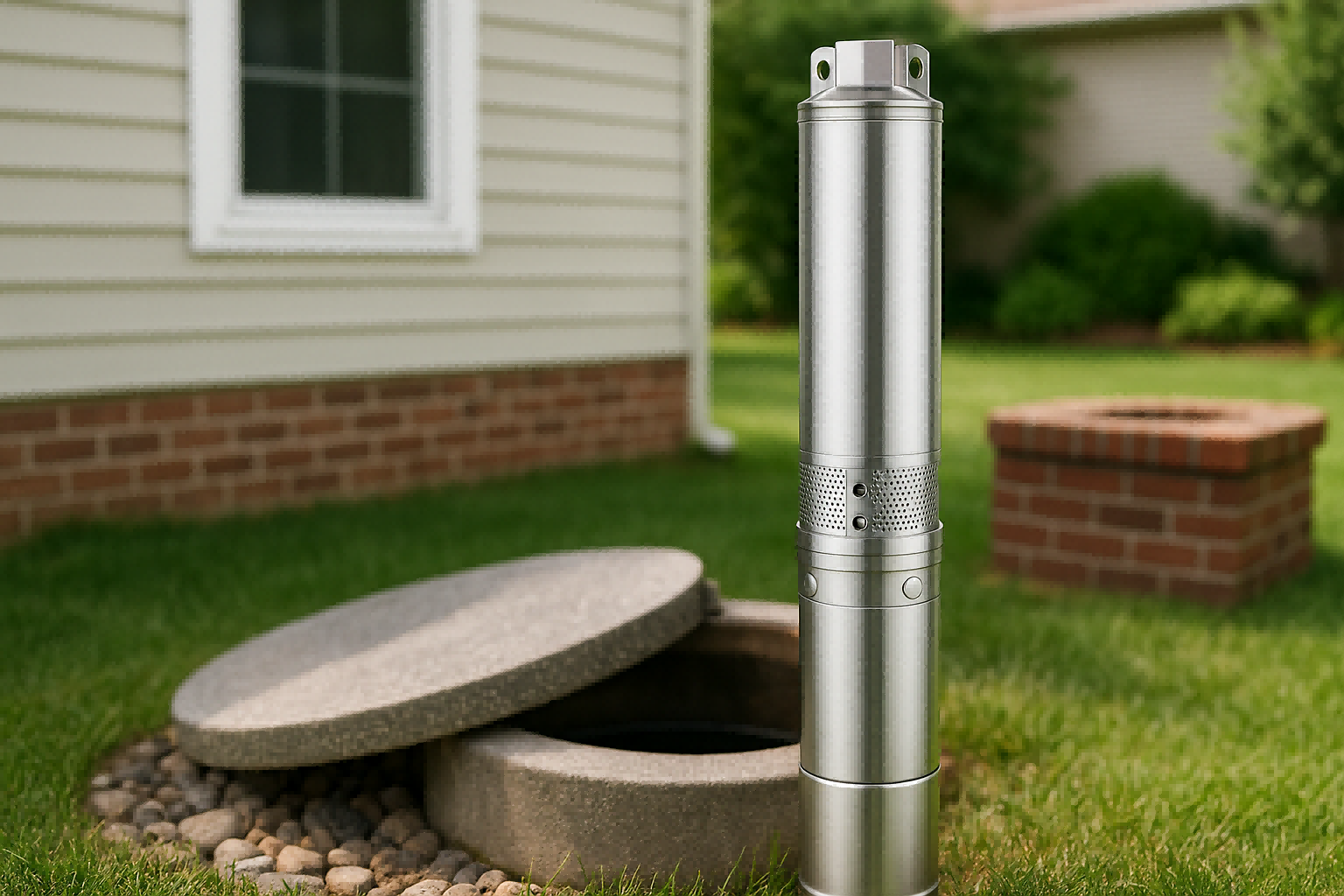Struggling with weak water pressure from your tank?
Frustrated by inconsistent flow?
You need a reliable solution to move water where you need it, when you need it.
Yes, in most cases, you need a pump for a water tank.
While gravity can provide basic flow if the tank is elevated, a pump is essential for achieving consistent pressure for showers, appliances, and multiple outlets in any modern residential or commercial setup.

But not all pumps are created equal.
Choosing the right one is critical for efficiency, reliability, and peace of mind.
A water tank provides storage, but a pump gives that water purpose.
It is the heart of your water supply system, transforming a static reservoir into a dynamic, on-demand resource.
Let's explore the key factors you need to consider to make the perfect choice for your system.
Understanding the Basics: Why a Pump is Essential
Your water tank is full, but the tap only produces a trickle.
This low pressure makes daily tasks frustrating.
A pump is the heart of your system, ensuring strong, steady flow.
A pump provides the necessary force to move water from your tank to your faucets.
Without it, you are limited by gravity, which often fails to deliver the pressure required for modern appliances, multi-story buildings, or extensive irrigation systems.
It transforms storage into a usable supply.
A gravity-fed system is the simplest approach.
It relies entirely on the height difference between your water tank and your faucet.
For every 10 meters of height, you gain approximately 1 bar of pressure.
This method works, but often not well enough for modern living.
The Limits of Gravity
Gravity can be sufficient for very basic uses.
Think of a rain barrel connected to a garden hose for simple watering.
The flow might be slow, but it gets the job done.
However, once you need to power a shower, a washing machine, or multiple taps at once, gravity falls short.
The pressure is often too low and inconsistent.
Most household appliances have minimum pressure requirements to operate correctly.
The Power of a Pump
A pump actively adds energy to the water.
It creates the pressure needed to deliver a strong, consistent flow to any point in your property.
This means you can have a refreshing shower, run your dishwasher, and water your garden simultaneously, without a frustrating drop in performance.
It makes your water supply reliable and functional.
Key Metrics to Understand
When talking about pumps, you will often hear two terms: pressure and flow rate.
- Pressure: Measured in bars or PSI, this is the force at which water is delivered. Higher pressure means a stronger flow from the tap.
- Flow Rate: Measured in liters per minute (LPM) or gallons per minute (GPM), this is the volume of water a pump can move over a specific time.
Your goal is to choose a pump that provides enough pressure and flow for your household's peak demand.
| Feature | Gravity-Fed System | Pump-Based System |
|---|---|---|
| Pressure | Low & Inconsistent | High & Consistent |
| Flow Rate | Variable, often weak | Strong & Reliable |
| Appliance Use | Limited, may not work | Fully supported |
| Cost | Low initial cost | Higher initial investment |
| Complexity | Simple | Requires installation & power |
| Reliability | Depends on tank height | Highly reliable |
What Are the Best Pump Options for Water Tanks?
Choosing a pump feels overwhelming with so many types available.
Making the wrong choice leads to poor performance or premature failure.
Understanding the main pump types helps you select the right one for your specific needs.
The best pump options are submersible pumps, which operate inside the tank, and surface pumps, which are installed outside.
Pressure pumps, often with variable speed drives, are a top choice for maintaining consistent household water pressure, offering both efficiency and quiet operation.
The choice between a submersible and a surface pump is often the first decision you will make.
It largely depends on your tank type and its location.
A submersible pump is placed directly inside your water tank, pushing water upwards.
A surface pump sits on the ground near the tank and pulls water out.
Both have their own advantages and ideal use cases.
Beyond this initial choice, modern pump technology offers features that drastically improve performance, efficiency, and longevity.
Let's dive into the specifics.
Submersible Pumps
These pumps are known for their quiet operation because they are submerged in water.
They are highly efficient as they push water directly, rather than pulling it.
This makes them an excellent choice for deep wells or underground cisterns.
Because they are cooled by the surrounding water, they often have a long service life.
Maintenance can be more difficult since you need to pull the pump out of the tank for access.
Surface Pumps
Surface pumps are easier to install and maintain because they are located outside the tank.
They are ideal for above-ground tanks or shallow wells.
They pull water from the source using suction.
One key consideration is the "suction lift," which is the vertical distance the pump can pull water.
Modern surface pumps can have an impressive suction lift of up to 8 meters.
They can be noisier than submersible models, but advanced designs now operate at very low decibels.
The Rise of Intelligent VFD Pumps
The most significant advancement in pump technology is the integration of Variable Frequency Drives (VFDs).
These are often called smart pumps.
Instead of running at a fixed, maximum speed all the time, a VFD pump adjusts its motor speed in real-time based on water demand.
- Constant Pressure: When you open a tap, the pump speeds up just enough to maintain the pre-set pressure. If you open a second tap, it speeds up more. This eliminates the frustrating pressure fluctuations common with older systems.
- Energy Efficiency: Because the pump only runs as fast as needed, it can reduce electricity consumption by up to 50%. This delivers significant long-term savings on your energy bills.
- Reduced Wear: The soft start and soft stop function gradually ramps the motor up and down. This reduces mechanical stress and prevents water hammer, extending the life of both the pump and your plumbing.
- Ultra-Quiet Operation: The combination of a high-efficiency motor and VFD control results in noise levels below 50dB, making them quieter than a library and ideal for residential use.
How to Choose the Right Pump
You bought a pump, but it's not powerful enough for your needs.
Or worse, it's oversized, wasting energy and money.
You must match the pump's capabilities to your specific application to avoid these common mistakes.
To choose the right pump, you must calculate your required flow rate and pressure.
Consider the total number of outlets, the height the water must travel (head), and the type of water being pumped. Consulting a pump sizing chart or an expert is highly recommended.
Selecting the correct pump is a technical decision.
It requires a clear understanding of your water system's demands.
Rushing this step can lead to a system that is either inadequate or inefficient.
You need to consider several key factors to ensure you get a pump that delivers reliable performance for years to come.
This process involves looking at your household's water usage, the physical layout of your property, and the quality of your water source.
Let's break down the essential considerations.
Calculating Your Required Flow Rate
Flow rate is the volume of water you need at any given moment.
To figure this out, list all the water outlets in your home and their typical flow rates.
Then, add up the flow rates of all outlets that might be used at the same time.
This gives you your peak demand.
| Outlet | Average Flow Rate (LPM) |
|---|---|
| Kitchen Faucet | 5 - 10 |
| Bathroom Faucet | 4 - 8 |
| Shower | 10 - 20 |
| Washing Machine | 15 - 20 |
| Dishwasher | 10 - 15 |
| Garden Hose | 15 - 25 |
For a family of four, it's possible a shower, a kitchen faucet, and a toilet could be used simultaneously.
In this case, your peak demand could be 20 + 10 + 10 = 40 LPM.
Your pump must be able to meet this demand.
Determining Pressure and Head Height
Pressure is determined by the "total head."
This is the total vertical height the pump must lift the water, plus any pressure losses from friction in the pipes.
- Vertical Lift (Static Head): The height from the water level in your tank to the highest outlet (e.g., a second-floor shower head).
- Friction Loss: Pipes, bends, and valves all create friction, which reduces pressure. The longer and narrower the pipe, the greater the friction loss.
An expert can help you calculate the total head accurately.
Once you have this, you can choose a pump that delivers your desired pressure at the faucet, typically around 3-4 bar (45-60 PSI) for residential use.
Considering Water Quality
The type of water you are pumping matters.
If you are pumping clean water from a sealed municipal backup tank, a standard pump is fine.
However, if you are using rainwater from a cistern, it may contain sediment, leaves, or other small debris.
In this case, you need a pump system that can handle it.
- Pre-Filtration: Always install a sediment filter before the pump inlet. This protects the pump's internal components, like the impellers and seals, from damage and blockages.
- Solids-Handling Pumps: For water with a high solids content, you may need a specialized pump designed to pass small solids without clogging.
Why Advanced Pump Technology Matters for Reliability
A cheap pump seems like a good deal until it fails during a dry spell.
Constant breakdowns and poor performance are costly and stressful.
Investing in a pump with advanced technology ensures reliability when you need it most.
Advanced pumps use superior materials and intelligent protection systems to ensure a long, trouble-free life.
Features like sealed electronics, high-grade stainless steel components, and automatic shutdown for faults like dry running prevent the most common causes of pump failure, extending lifespan by years.
When you rely on a water tank, your pump is not a luxury; it is a critical piece of infrastructure.
The difference between a basic pump and a high-quality one lies in the engineering and materials.
Superior design focuses on one thing: a long operational life with minimal maintenance.
Modern pumps achieve this through a combination of robust mechanical construction, intelligent electronic safeguards, and premium materials designed to withstand harsh conditions.
These features protect your investment and provide true water security.
Let's explore the technical features that define a durable and reliable pump.
Superior Mechanical and Material Engineering
The quality of a pump starts with its core components.
Cheap pumps cut corners with plastic parts and standard bearings.
High-end models invest in materials that last.
- Premium Impellers: The impeller is the rotating part that moves the water. Using AISI304 stainless steel or high-quality brass prevents corrosion, wear, and deformation, ensuring consistent performance over time.
- High-Grade Bearings: The bearings support the motor shaft. Using precision bearings from top manufacturers results in quieter operation, higher efficiency, and a significantly longer lifespan compared to standard alternatives.
- Advanced Motor Design: The motor itself is a key factor. Motors using high-grade silicon steel and Class F insulation wire run cooler and more efficiently. A lower temperature rise (≤50K) is a direct indicator of a longer motor life.
The Ultimate Electronic Protection: Sealed PCBs
Water and electronics do not mix.
One of the most common failure points in a modern pump is its electronic controller board.
Moisture, condensation, dust, and insects can cause short circuits and failures.
The most robust solution to this problem is a fully sealed or "potted" Printed Circuit Board (PCB).
The entire main controller is encased in a waterproof, non-conductive resin.
This creates an impenetrable IP67-rated barrier.
It completely protects sensitive electronics from the environment, preventing an estimated 95% of moisture-related failures.
This single feature can extend the controller's life by 3 to 5 years.
A Comprehensive Suite of "Smart" Protections
The most advanced pumps have an onboard brain.
This brain is a comprehensive protection system that constantly monitors operating conditions and safeguards the unit from damage.
This suite of protections can include up to 14 different automatic safety functions.
| Protection Type | Function | Benefit |
|---|---|---|
| Water Shortage | Detects when the tank is empty and shuts down the pump. | Prevents the motor from burning out due to dry running. |
| Overheating | Monitors motor and water temperature; shuts down if too high. | Protects the motor from heat damage. |
| Voltage Fluctuation | Protects against power surges and drops. | Essential for areas with unstable power grids. |
| Frost Protection | Automatically runs the pump for a few seconds in freezing conditions. | Prevents water inside the pump from freezing and causing cracks. |
| Pipeline Leakage | Detects small, continuous drops in pressure and alerts the user. | Helps you find and fix leaks early, saving water and preventing damage. |
| Stall Protection | Shuts down the pump if the impeller is blocked. | Prevents motor burnout and mechanical damage. |
This intelligent system actively prevents the most common causes of pump failure, turning a simple machine into a self-sufficient, highly reliable appliance.
Conclusion
Choosing and installing the right pump is essential for a reliable water tank system.
It ensures consistent pressure, efficiency, and peace of mind for years to come.
FAQs
What size pump do I need for my water tank?
The right size depends on your required flow rate and pressure.
Calculate your home's peak water use and the height the pump needs to push the water to determine the correct size.
Can I use a water tank without a pump?
Yes, but only for low-pressure applications where the tank is significantly elevated.
For modern homes with appliances, a pump is almost always necessary for adequate pressure.
How do I increase water pressure from my tank?
The best way is to install a booster pump.
A variable speed drive (VFD) booster pump is ideal for maintaining strong, consistent pressure throughout your home.
How long does a water pump last?
A high-quality, well-maintained pump can last 8 to 15 years.
Pumps with features like soft start and comprehensive protection systems typically have a longer lifespan.
Should my water pump run constantly?
No, a pump should only run when there is a demand for water.
A pressure tank and a VFD controller help reduce frequent cycling, which saves energy and extends pump life.
What is the best pump for a domestic water tank?
A VFD pressure booster pump is often the best choice for domestic use.
It provides constant pressure, is energy-efficient, and operates very quietly.
How much does it cost to run a water pump?
Running costs depend on the pump's power, efficiency, and how often it runs.
An energy-efficient VFD pump can reduce electricity costs by up to 50% compared to a conventional pump.
Can one pump supply an entire house?
Yes, a correctly sized whole-house pump can supply all faucets, showers, and appliances.
It's crucial to calculate your home's total peak demand to select the right model.








